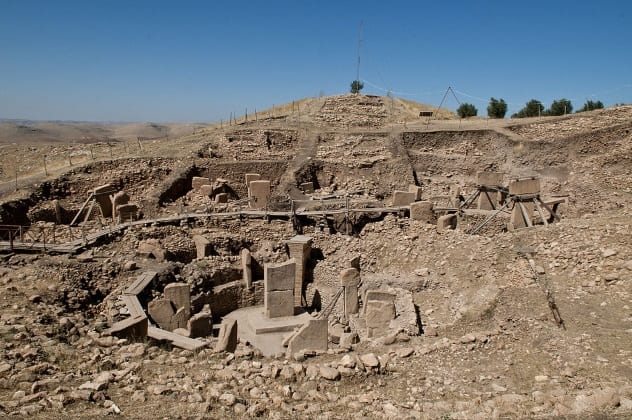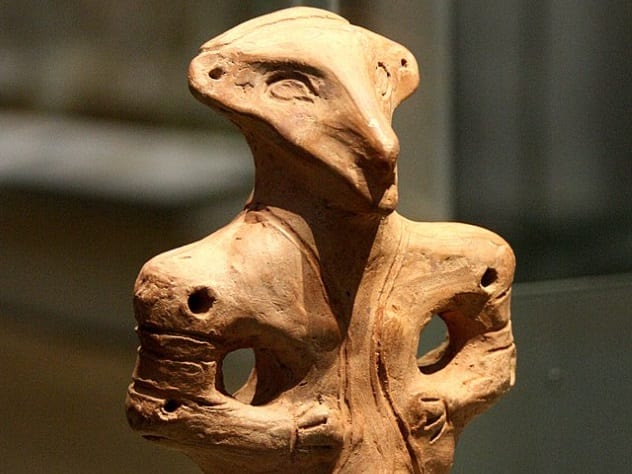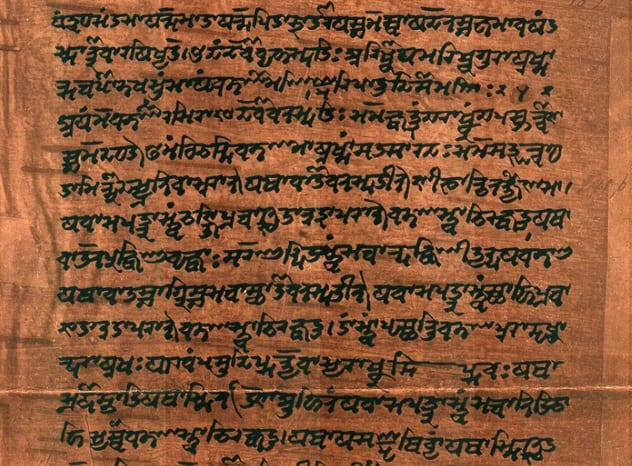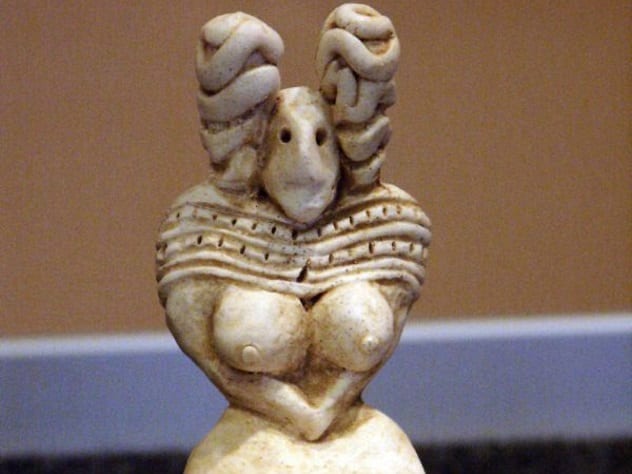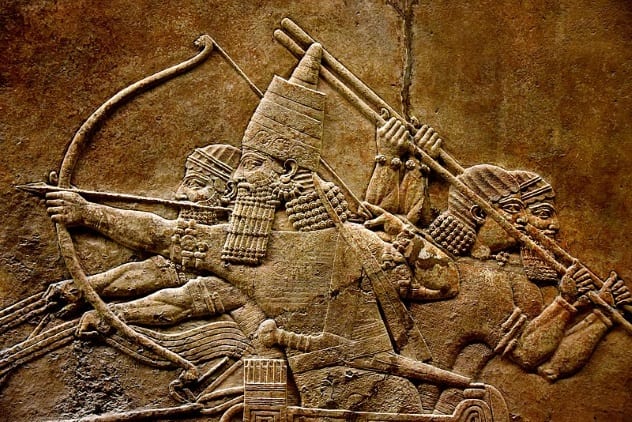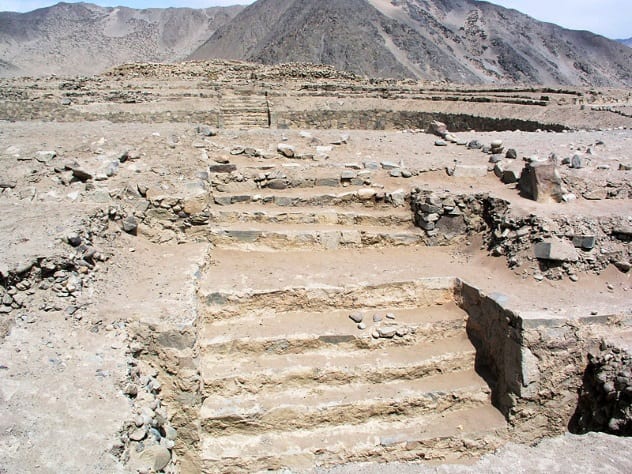Most people have heard about the ancient Egyptians, the Aztecs, and the Incas. But there are many more ancient civilizations that are not so well-known but which have left behind tantalizing glimpses into an older and very different way of life. Here are just a few of them.
10 Indus Valley Civilization3300–1300 BC
The Indus Valley Civilization was located in an area that spans parts of modern-day Pakistan, Afghanistan, and India, on the plains near the Indus River. Archaeologists have discovered evidence of farming communities as well as entire cities. Two prominent cities that have been excavated are Mohenjo-Daro and Harappa. They found that many of the houses had their own wells and bathrooms, along with a sophisticated underground drainage system. Documents found in Sumeria recorded commercial, religious, and artistic events happening in these areas and described their “exotic wares.” The Indus Valley people had a writing system, but to date, attempts to decipher examples of their writing, found on pottery and copper tablets, have failed. It is not yet clear whether the Indus Valley was a civilization in itself or whether it formed part of a larger kingdom. It would be likely that if it was part of a larger kingdom, artifacts would have been found showing this—statues of known kings, for example, or depictions of wars, but to date, no such articles have been found.[2] It is entirely possible that the Indus River people were an isolated civilization with their own language and lifestyle, which is only now being uncovered. One of the many structures uncovered is the Great Bath at Mohenjo Daro, measuring 83 square meters (897 ft2), which is believed to have been used for ritual bathing. The reason for the decline of the civilization is unclear. Historians have developed a number of possible theories, including the drying up of the river or, alternatively, flooding, trade difficulties with Mesopotamia, or invasion by an unknown enemy.
9 The Kingdom Of AksumAD 100–940
Aksum was a kingdom in what is now Northern Ethiopia. It was a society of power and influence, and at its height, it extended from the edge of the Sahara in the west to the Arabian desert in the east.[3] Aksumites developed their own written script, Ge’ez, and traded with other nations across the Eastern Mediterranean. It was described by a Persian writer as one of the four greatest powers in the world. Despite this, comparatively little is known of Aksum today, and it is generally held to be a “lost” civilization. It is believed that the society was an ordered one, based on a hierarchy of kings and noblemen. In the fourth century AD, Aksum embraced Orthodox Christianity. The king had been converted by a former Syrian prisoner, who was later made bishop of Aksum Aksum has been claimed as the birthplace of the Queen of Sheba and the home of the Ark of the Covenant. The ark was said to have been taken by Menelik I, son of the Queen of Sheba and King Solomon, and brought home, where it resides in a local church. (No one is allowed to see it, so who knows?)
8 Konar Sandal4500–3000 BC
Konar Sandal is located in Jiroft, a city in the southern part of Iran. In 2002, a ziggurat (a terraced temple complex) was discovered, one of the largest and oldest of its kind in the world. To date, two mounds have been excavated at Konar Sandal, and finds have included a large two-story building with very thick walls, suggesting that they formed some type of fortification. The discovery of the ziggurat strongly suggests a structured civilization based on ritual and belief. It is believed to date to around 2200 BC and was possibly built by the Aratta, a Bronze Age kingdom which had been described in Sumerian texts but whose whereabouts have not been discovered. The head of the archaeological excavation described the site as an “independent, autochthonous Bronze Age civilization with its own architecture and language.”[4] The site has been subject to looting and unauthorized excavations, and it is not known how many treasures have been lost. Despite this, it is thought that the civilization may provide evidence of the oldest written language in the world. Work is ongoing, and as the site contains evidence of religious, domestic, agricultural, and industrial dwellings, it is hoped that there is much more still to find.
7 Sanliurfa, Turkey
Sanliurfa, in modern-day Turkey, originally named Urfa, has a long and checkered history, with many religions claiming an affinity with the area. It boasts a number of interesting archaeological features, such as a cave said to be the birthplace of the Prophet Abraham. It was considered to be a major center of Syrian culture. Situated very near Sanliura is Gobekli Tepe, where megalithic carved stones were cut and arranged before the known invention of metal tools—and 6,000 years before Stonehenge came into existence. Gobekli Tepe may be the site of the world’s oldest temple.[5] The stones, up to 5 meters (16 ft) tall, are arranged in circles, and each weigh between 7 and 10 tons. The largest circle measures 20 meters (65 ft) in diameter, and some of the stones are carved with carved with images of creatures such as foxes, lions, scorpions, and vultures. It is thought that people would have traveled from Urfa to the temple of Gobekli Tepe for religious ceremonies, though to date, no evidence has been found to show what this involved. Surveys of the area suggest that there may be as many as 16 similar circles. Unfortunately, in 2018, inexpert conservation work damaged parts of the site when concrete was poured over it.
6 Vinca Civilization5000–3500 BC
The Vinca Civilization (aka the Danube Valley Civilization) boasts what some believe to be one of the earliest writing systems in the world, with around 700 characters, most of which have been found carved in pottery. Although the language has not been translated, it is believed by those who think it is a language to contain a form of numbers as well as letters. Their advanced farming system made it one of the most sophisticated Neolithic cultures we know of.[6] Evidence of the Vinca Civilization has been found along the banks of the Danube River and is thought to have existed long before the great civilizations of Mesopotamia and Egypt. The first archaeological evidence was discovered in 1908 at Belo Brdo Hill near Belgrade. The settlements are thought to have lasted more than 1,000 years before being abandoned. Each settlement housed a few thousand people, in homes made of wattle and daub clay. They kept animals and grew crops and even had a type of plow for sewing cereals. Evidence has also been found of copper utensils, around 1,000 years before their general use in Europe. At a necropolis near Varna, the “Varna Gold Treasure” was discovered. Dating between to around 6,500 years old, it is possibly the oldest gold smithy in the world. It is not known why the Vinca Civilization vanished, but when they did, they seem to have taken their knowledge and their innovations with them.
5 Aryan Kingdom1500 BC
Around 1500 BC, a large group of nomads, possibly including the remnants of the Indus Valley Civilization, moved into India. It is unclear whether this mass migration was a result of fleeing from a natural disaster or whether it was, in fact, an invasion. Whatever the cause, a new civilization was born on the Indian subcontinent. The Aryan language developed, and the new settlers developed agriculture. The Aryan civilization was widely established by around 1000 BC.[7] (Note that the name “Aryan” comes from the Sanskrit word arya, which is what these migrants to India referred to themselves as.) Today, there is little historical record of this civilization, though it is mentioned in the Vedas—a collection of religious texts—with tales of war and other conflicts. However, there is no way of knowing how accurate these texts are. There are few remaining artifacts of the period, though archaeological research is ongoing.
4 Mehrgarh7000 BC
In 1974, excavations began at Mehrgarh in Pakistan, but a lack of government interest, erosion of the land, and chronic looting of the site has kept Mehrgarh a relatively hidden civilization. Additionally, archaeological digs have been made more difficult by ongoing tribal feuds and lax security for the diggers. That’s a shame, because Mehrgarh is one of the oldest civilizations in the world. Those artifacts that weren’t pinched show a highly developed society with established trade links with different regions. It is believed to have been in existence around 7000 BC, thousands of years before the Indus Valley Civilization in the same region.[8] Mehrgarh is thought to have had a population of around 25,000, and evidence of daily life there is still being discovered, including indications of dental surgery. Many of the remains are buried deep in the ground, and uncovering them poses as challenge. Remains excavated so far include a complex of well-preserved buildings made from mud bricks and even a formal cemetery.
3 Nineveh6000—612 BC
Nineveh (modern-day Mosul in Iraq), was the site of one of the oldest and greatest civilizations. The early city was damaged in a series earthquakes, including the destruction of the first temple of Ishtar, but the city continued to grow. King Sennacherib (704–681 BC) made Nineveh the capital of the Assyrian Empire, building a 15-gate great wall around the city as well as parks, aqueducts, canals, and an 80-room palace, which, being a modest man, he proclaimed a “palace without rival.” Some scholars believe that the famous Hanging Gardens of Babylon were actually located in Nineveh and commissioned by the king.[9] A library was constructed, containing over 30,000 inscribed clay tablets, an enormous number of works for the time. Scholars and scribes flocked to the city, and it became a center for the development of the arts, sciences, and architecture. One of the most unusual tablets found at the site told the story of a great flood which drowned the whole world and a man who survived by building a boat and who released a dove in search of dry land. This version of the Noah’s Ark story was part of an epic poem written in 1800 BC, 1,000 years before it was included in the Hebrew Bible. Much of the contents of Nineveh’s library now lie in the vaults of the British Library. A royal feud in 627 BC led to the breakup of the Assyrian Empire, and in 612 BC, Nineveh was burned to the ground by a combined force of Persians, Babylonians, and others, who divided the region between them, allowing the grand buildings to fall into ruin. The ruins began to be excavated in 1846, and work has continued to the present day, though it has suffered during recent unrest and been damaged by vandalism.
2 Nubia
Nubia, which lay to the south of Egypt in Sudan, was a civilization that once ruled Egypt. Nubia had its own pyramids; the remains of 223 can still be seen today. Ancient Egypt’s 25th Dynasty, also known as the Black Dynasty because of the dark skin of the Nubian pharaohs, was a period of stability and prosperity, with much emphasis on culture and the arts.[10] The kingdom had its own written language and culture, and the region was rich in gold. Nubia had their own symbols of kingship, but their influence was over when Pharaoh Sneferu raided Nubia and established it as an outpost for mineral extraction. Far from being a land of status, it became a region of Egypt under the pharaoh’s control. The Nubian people largely assimilated into the Egyptian population, though archaeological evidence of their civilization remains. Like the Egyptians, they favored carved images of themselves, though they did, at times, like to portray themselves as overweight. To each his own.
1 Norte Chico Civilization3500–1800 BC
The Norte Chico Civilization is one of mystery. To date, very little is known about this pre-Columbian society in Peru, which is possibly the oldest known civilization in the Americas. Evidence of huge constructions, including pyramids, and the remains of complex irrigation systems have been found, but there is little to show how people lived their daily lives. To date, six pyramids have been discovered, the largest of which is known as Piramide Mayor. Though not as elaborate as the later Inca architecture, the pyramids were still complex structures. Norte Chico settlements were situated north of modern-day Lima. It is interesting that Norte Chico is one of the few civilizations at that time which did not appear to know how to make pottery, as there have been no such artifacts discovered at the sites. It is believed that they used gourds instead, which would have been of limited use in cooking food.[11] To date, few examples of art or decoration have been found on their artifacts, though there does seem to have been some belief in a deity, though it is not possible as yet to say what form their beliefs took. The settlements were abandoned sometime around 1800 BC, but it is not yet clear why. There is no evidence that they were ever involved in war or conflict, nor that they were hit by a natural disaster. The settlements were centered around three main rivers, so it it possible that a prolonged drought caused the population to migrate elsewhere, but this cannot be proved. So the mystery remains. Ward Hazell is a writer who travels, and an occasional travel writer.



